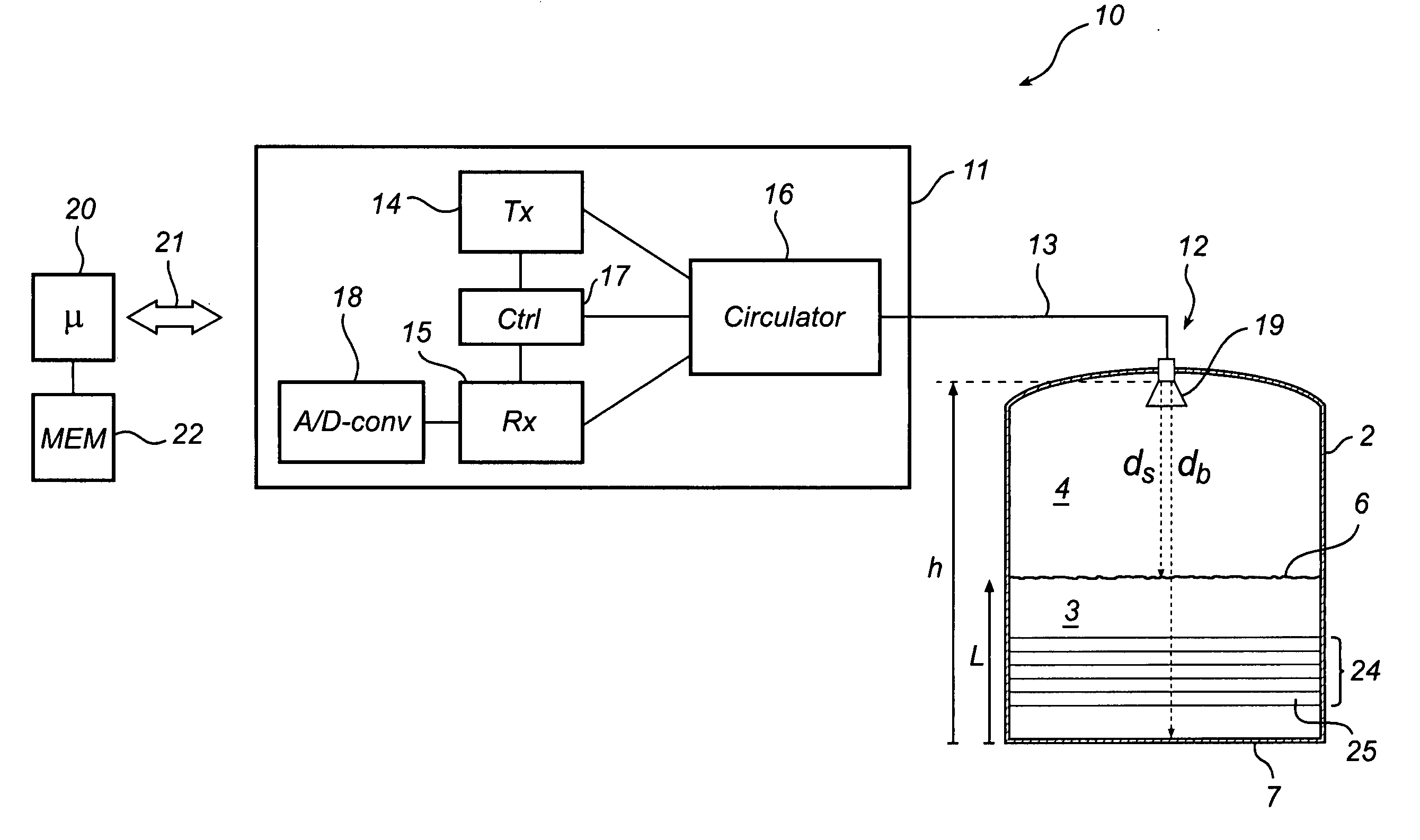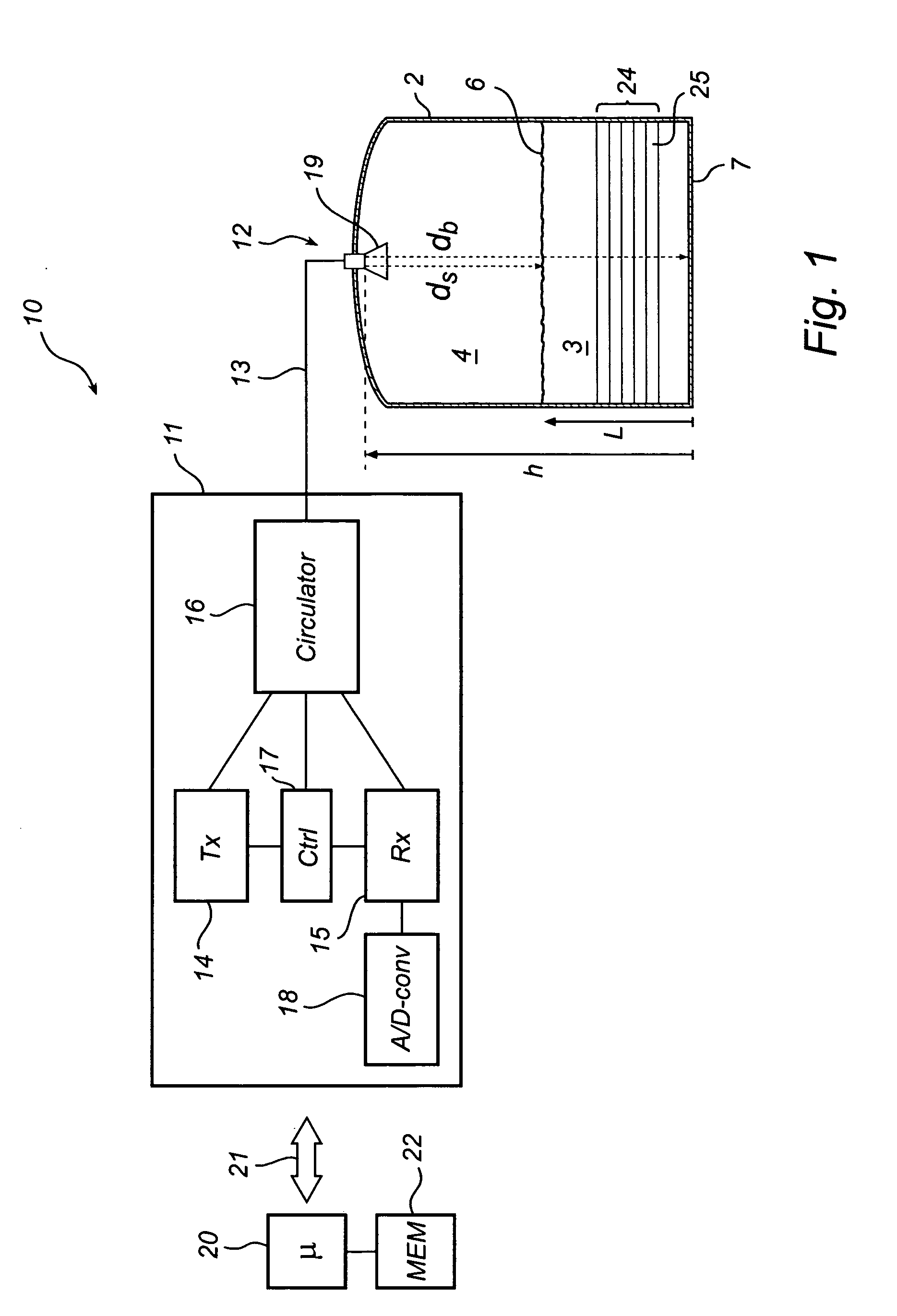Radar level gauging
a level gauging and radar technology, applied in the direction of level indicators by physical variables, liquid/fluent solid measurements, engine lubrication, etc., can solve the problems of contaminated contents of the tank, inability to detect the surface echo, and inability to accurately measure the level of the gauging process. , to achieve the effect of sufficient accuracy
- Summary
- Abstract
- Description
- Claims
- Application Information
AI Technical Summary
Benefits of technology
Problems solved by technology
Method used
Image
Examples
Embodiment Construction
[0032]FIG. 1 shows a schematic block diagram of a radar level gauge (RLG) 10 mounted in a tank 2, in which a method according to the present invention can advantageously be implemented. The gauge 10 is arranged to perform measurements to determine a process variable, here the level L of a product 3 stored in the tank 2. The product can be an oil product, such as e.g. crude oil, a liquid petroleum gas (LPG), a liquid natural gas (LNG), other liquid hydrocarbons, or liquids in general which are at least partially transparent to microwaves. Propane and butane are two typical gases stored in condensed form as liquids.
[0033]The RLG 10 comprises a microwave controller 11, a microwave emitter / receiver 12, and a signal transfer medium 13 connecting the emitter / receiver 12 to the controller 11. The controller 11 can comprise a transmitter 14, a receiver 15, a circulator 16 and any control circuitry 17 required to manage these components. Further, the controller 11 can comprise an A / D-convert...
PUM
 Login to View More
Login to View More Abstract
Description
Claims
Application Information
 Login to View More
Login to View More - R&D
- Intellectual Property
- Life Sciences
- Materials
- Tech Scout
- Unparalleled Data Quality
- Higher Quality Content
- 60% Fewer Hallucinations
Browse by: Latest US Patents, China's latest patents, Technical Efficacy Thesaurus, Application Domain, Technology Topic, Popular Technical Reports.
© 2025 PatSnap. All rights reserved.Legal|Privacy policy|Modern Slavery Act Transparency Statement|Sitemap|About US| Contact US: help@patsnap.com



